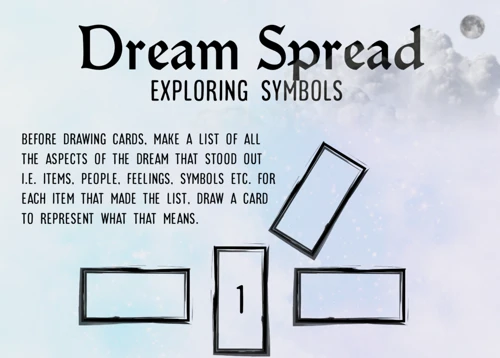Contents
Introduction
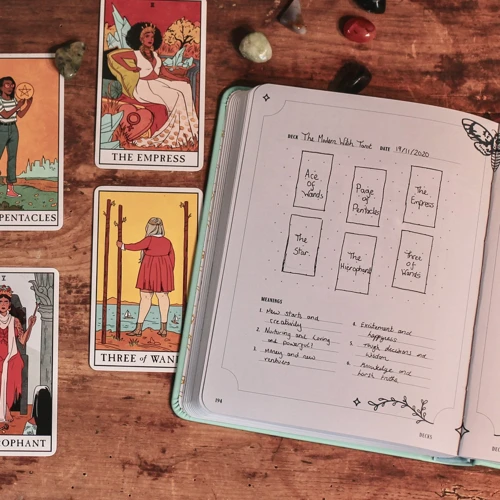
Dream cards can be a powerful tool for unlocking the hidden messages and meanings within our dreams. By tapping into our intuition and using the symbolism depicted on the cards, we can gain valuable insight into our subconscious mind. In this article, we will explore the world of dream cards and provide step-by-step tips on how to use them to interpret your dreams. Whether you’re a beginner or an advanced practitioner, these techniques will help you delve deeper into the realm of dreams and uncover the wisdom they hold.
What are dream cards?
- Dream cards refer to a set of cards that are specifically designed for dream interpretation. They are similar to tarot cards but are focused solely on deciphering the symbolism and messages embedded within dreams.
- Each dream card typically features symbolic imagery that represents various elements such as animals, objects, emotions, and natural phenomena.
- Unlike tarot cards, dream cards do not follow a specific structure or system. They provide a more intuitive and personalized approach to dream interpretation.
- These cards can be used by anyone, regardless of their level of experience in dream analysis. They serve as a useful tool for connecting with your subconscious mind and gaining deeper insights into your dreams.
- While dream cards can be used individually, they are often used in conjunction with other techniques such as keeping a dream journal or incorporating them into tarot readings.
- If you’re new to working with dream cards, it’s important to take the time to familiarize yourself with the specific symbols and meanings associated with the deck you are using. This will help you to develop a deeper understanding of your dreams and enhance your ability to interpret them accurately.
Getting started with dream cards
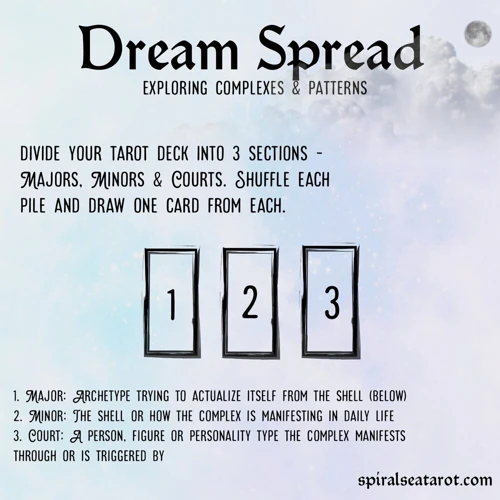
When it comes to getting started with dream cards, there are a few key steps you can take to ensure a successful and insightful experience. Firstly, it’s important to choose the right dream card deck that resonates with you and aligns with your intuition. Consider the artwork, symbolism, and overall aesthetic of the cards. Once you have selected your deck, take the time to understand the symbolism associated with each card. This will allow you to interpret the messages from your dreams more accurately. Additionally, cleansing and charging your dream cards regularly can help maintain their energy and clarity. This can be done through various methods such as smudging, moonlight exposure, or using crystals. By taking these initial steps, you can lay a solid foundation for using dream cards effectively in your dream interpretation practice.
Choosing the right dream card deck
- is essential for effective dream interpretation. There are numerous dream card decks available, each with their own unique style, symbolism, and energy.
- When selecting a dream card deck, consider your personal connection to the artwork and symbolism depicted on the cards. Look for a deck that resonates with you on an intuitive level.
- Take into account your preferred style – whether you are drawn to vibrant and colorful illustrations, abstract artwork, or more traditional imagery.
- Consider the theme or focus of the deck. Some decks may have a specific theme, such as nature, mythology, or spirituality, which can influence the energy and messages they convey.
- Pay attention to the size and quality of the cards. Choose a deck that feels comfortable to handle and has durable card stock to ensure longevity.
- Research and read reviews about different dream card decks to gather insights from others who have used them. This can give you a better understanding of the deck’s compatibility with your own interpretation style.
- Remember that there is no right or wrong choice when it comes to selecting a dream card deck. Trust your intuition and choose a deck that speaks to you personally.
Understanding dream symbolism
- To effectively interpret your dreams using dream cards, it’s essential to understand the symbolism that is present within your dreams.
- Dream symbolism refers to the representation of abstract concepts or ideas through the use of specific symbols in dreams.
- Symbols can vary widely in meaning and can be influenced by personal experiences, cultural background, and individual beliefs.
- When working with dream cards, it’s important to trust your intuition and personal associations when interpreting symbols.
- While some symbols may have universal meanings, such as water representing emotions or animals representing aspects of the self, their significance can also be subject to individual interpretation.
- Keep in mind that dream symbolism is highly personal, and some symbols may hold different meanings for different individuals.
- It can be helpful to keep a dream journal where you document your dreams and the symbols that appear in them. This will allow you to identify recurring symbols and patterns, providing deeper insights into their meanings.
- By developing a deeper understanding of dream symbolism, you will be able to unlock the messages and guidance hidden within your dreams, enabling you to gain valuable insights into your subconscious mind.
Cleansing and charging your dream cards
- Cleansing your dream cards is an essential step to ensure they are energetically clear and ready for use. This process helps to remove any negative or stagnant energy that may have accumulated.
- One method for cleansing your dream cards is to use sage or palo santo. Simply light the herb and pass the cards through the smoke, envisioning any unwanted energy being released.
- Another method involves using crystals such as clear quartz or selenite. Place the cards on top of the crystal for a few hours or overnight to allow the crystal’s cleansing properties to remove any residual energy.
- Once your dream cards have been cleansed, it’s important to charge them with your intention. This can be done by holding the cards in your hands and visualizing them being filled with positive energy and the intention of receiving clear and insightful messages.
- If you prefer, you can also place your dream cards under the moonlight or sunlight for a few hours to charge them with the natural energy of the celestial bodies.
- Remember to revisit this cleansing and charging process periodically, especially if you sense that your dream cards are not giving accurate readings or if they feel energetically heavy.
Interpreting your dreams with dream cards
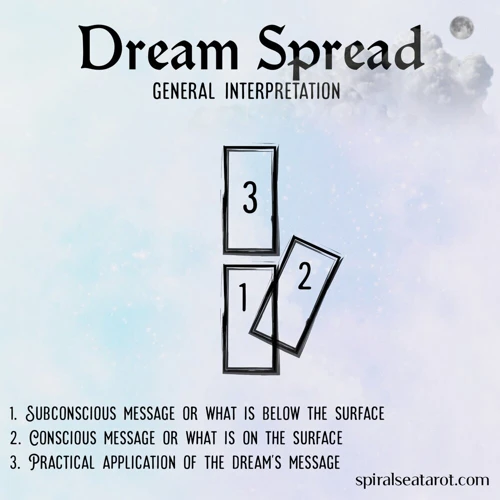
- allows you to delve deeper into the hidden meanings and messages within your dreams. By following a step-by-step process, you can unlock valuable insights from the symbolism depicted on the cards.
- Start by keeping a dream journal and recording your dreams as soon as you wake up. This will help you to remember the details and emotions associated with the dream.
- When you’re ready to interpret your dream, select cards from your dream card deck that resonate with the symbols, emotions, or themes present in your dream. Trust your intuition and choose the cards that feel most aligned with your dream.
- As you lay out the chosen cards, pay attention to the imagery and symbolism on each card. Consider how they relate to your dream and the emotions or messages they convey.
- Combine the interpretations of each card to gain a comprehensive understanding of your dream. Take note of any patterns, recurring symbols, or connections between the cards.
- Remember, dream interpretation is a personal and intuitive practice. The meanings of the cards may differ for each individual, so it’s important to trust your own insights and interpretations.
Keeping a dream journal
- is an essential practice for those who wish to interpret their dreams using dream cards. By recording your dreams in a journal, you create a tangible and accessible record of your dream experiences.
- Start by keeping a notebook or journal dedicated solely to your dreams. Place it by your bedside, along with a pen or pencil, so that you can easily reach for it upon waking.
- As soon as you wake up, take a few moments to reflect on your dream and jot down any details that you can remember. Include as much information as possible, such as the people, places, emotions, and events that stood out to you.
- Don’t worry about making your entries perfect or grammatically correct. Allow your thoughts and memories to flow freely onto the page. The goal is to capture the essence of the dream and the symbolism that you experienced.
- Over time, you may start to notice patterns or recurring symbols in your dreams. By documenting your dreams consistently, you can develop a deeper understanding of your subconscious mind and the messages it is trying to convey.
- When you are ready to use your dream cards for interpretation, you can refer back to your dream journal to gain additional insights. By comparing the symbolism in your dreams to the imagery on the cards, you can uncover hidden meanings and make connections.
- Having a dream journal also provides a space for reflection and self-discovery. It allows you to track your personal growth and transformation through your dreams, creating a deeper connection to your subconscious mind.
Selecting cards for your dream interpretation
- Selecting the right cards for your dream interpretation is an important step in the process of using dream cards.
- Start by shuffling the deck and focusing on your intention to gain insight into the symbols and messages within your dream.
- When you feel ready, draw a card from the deck. Trust your intuition to guide you in selecting the card that resonates with your current dream.
- Pay attention to the symbolism depicted on the card. Look for elements that relate to the themes, emotions, or objects present in your dream.
- Take into consideration both the literal and metaphorical interpretations of the symbols on the card. Sometimes, a symbol may have a direct correspondence with your dream, while other times it may represent a deeper, symbolic meaning.
- Take note of any feelings, thoughts, or sensations that arise when you look at the card. These intuitive impressions can provide additional clues about the interpretation of your dream.
- In some cases, you may choose to draw multiple cards to gain a more comprehensive understanding of your dream. Each card can be interpreted in relation to different aspects of your dream, providing a richer and more nuanced interpretation.
- Remember, there are no right or wrong answers when it comes to interpreting your dreams with dream cards. Trust your intuition and personal connection with the cards to guide you in uncovering the meanings and messages that are relevant to you.
Using intuition and imagery
- is a crucial aspect of interpreting your dreams with dream cards. It involves tapping into your inner wisdom and allowing your instincts to guide you in understanding the symbolism presented on the cards.
- When selecting dream cards for interpretation, it’s important to trust your intuition. Pay attention to which cards draw your attention or evoke a certain feeling within you. These cards are likely to hold a significant message for your dream analysis.
- Another powerful technique is to examine the imagery depicted on the cards. Observe the colors, elements, and objects present and reflect on what they may symbolize in the context of your dream.
- Don’t be afraid to think outside the box and draw connections between the cards and the unique aspects of your dream. The symbolism on the cards can often be interpreted in a personal and subjective way.
- By combining your intuition and the visual cues provided by the imagery on the cards, you can unlock deeper layers of meaning and gain valuable insights into the messages your dreams are trying to convey.
- Throughout your interpretation process, it’s essential to remain open-minded and trust in your ability to connect with the cards and understand their messages. Remember, there are no right or wrong interpretations, as dream analysis is a highly personal and subjective experience.
- If you want to explore other techniques for dream card readings, you can incorporate them into tarot readings or experiment with different card spreads. These variations can provide a deeper understanding of the dream’s context and allow for a more comprehensive interpretation.
Advanced techniques for dream card readings
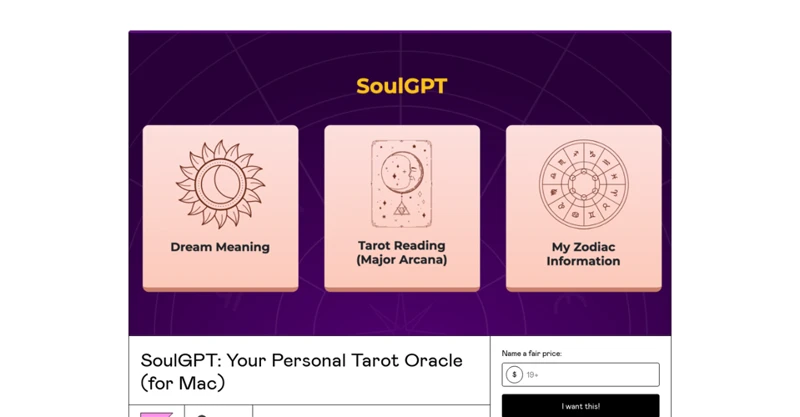
When it comes to dream card readings, there are advanced techniques that can take your interpretations to the next level. One technique is creating dream card spreads. By laying out the cards in specific positions, you can tap into the intricacies of your dream and gain a more detailed understanding of its message. For example, you could create a spread that focuses on the past, present, and future aspects of your dream, or a spread that delves into the emotional, mental, and spiritual aspects. Another advanced technique is combining dream cards with other divination methods. This allows you to incorporate different forms of divination, such as tarot or astrology, to enhance the depth and accuracy of your dream interpretations. By merging the insights from various systems, you can gain a more comprehensive understanding of the symbols and messages within your dreams.
Creating dream card spreads
Creating dream card spreads allows you to explore different aspects of your dreams and gain a more comprehensive understanding of their meanings. Here are some steps to help you create your own dream card spreads:
1. Determine the focus: Decide on the specific theme or question you want to explore in your dream interpretation. This could be related to a particular area of your life, a recurring dream, or a specific symbol you want to delve into.
2. Select the number of cards: Choose how many cards you want to include in your spread. This can vary depending on the complexity of your question or the depth of insight you are seeking. A simple three-card spread or a more elaborate ten-card spread are common options.
3. Assign positions: Determine the positions for each card in the spread. Each position should have a specific meaning or focus. For example, you could have positions for the past, present, and future aspects of the dream, or positions for emotions, challenges, and guidance.
4. Shuffle and draw: Shuffle your dream card deck while focusing on your question or the theme of your spread. Then, intuitively choose the cards and place them in their respective positions in the spread.
5. Interpret the cards: Now, analyze each card individually and in relation to its position in the spread. Consider the symbolism, colors, and imagery depicted on the cards. Reflect on how the cards interact with each other and what insights they provide regarding your dream.
6. Document your findings: Write down your interpretations and any personal insights or messages that come to mind. Keeping a dream journal can be helpful in tracking and reflecting on your dreams over time.
Creating your own dream card spreads allows you to personalize your dream interpretations and tailor them to your specific needs. It’s an opportunity to delve deeper into the meanings behind your dreams and gain valuable insights into your subconscious mind. If you’d like to explore other ways to incorporate dream cards, you can also learn about how to incorporate dream cards into tarot readings or analyzing placement in dream card tarot spreads.
Combining dream cards with other divination methods
- Combining dream cards with other divination methods can enhance your dream analysis and provide a broader perspective on the messages and symbolism present in your dreams.
- One way to combine dream cards with other divination methods is to incorporate them into a tarot reading. You can use the dream cards as a special set of cards within the tarot spread, allowing them to contribute unique insights to the reading.
- By pairing dream cards with tarot cards, you can gain a deeper understanding of the connections between your dreams and your waking life. The dream cards can provide additional symbolism and enrich the overall interpretation of the tarot reading.
- Another divination method that can be combined with dream cards is astrology. By considering the astrological influences present at the time of your dream, you can further interpret the meaning and significance behind the dream cards you have drawn.
- Using dream cards in conjunction with astrology can help you identify the planetary energies that may have influenced your dream and provide a more comprehensive analysis of its message.
- In addition to tarot and astrology, you can also combine dream cards with other divination methods such as pendulum dowsing, rune casting, or crystal divination. These techniques can be used to gain additional insights or clarify specific aspects of your dream interpretation.
- Remember to trust your intuition and use these combined divination methods as a tool to deepen your understanding of your dreams. Each method brings its own unique perspective and can offer valuable insights into the symbolism and messages present in your dreams.
Working with dream card reversals
Working with dream card reversals adds an extra layer of depth and nuance to dream card readings. Reversals occur when a card is pulled from the deck, and it appears upside down or in the reversed position. This alters the traditional meaning of the card, providing a different perspective or a potential blockage related to the symbol represented by the card. When interpreting dream cards in reverse, it is essential to pay attention to the reversed meaning as it can offer valuable insights into subconscious patterns, hidden obstacles, or unresolved issues. To work with dream card reversals effectively, shuffle the deck with the intention of incorporating reversed cards into your readings. When a reversed card appears during a dream card reading, consider its reversed meaning along with the traditional interpretation. Take note of the emotions, thoughts, and intuitive impressions that arise when interpreting the reversed card. This added layer of symbolism can deepen the understanding of the dream’s message and provide a more comprehensive analysis. Remember to trust your intuition when working with dream card reversals and allow your subconscious mind to guide you in uncovering the hidden meanings within your dreams.
Common dream card symbols and their meanings
Dream cards contain a variety of symbols that hold significant meanings when interpreting dreams. Understanding these symbols can provide valuable insights into the messages and themes present in your dreams. Here are some common dream card symbols and their meanings:
- Water: Water often symbolizes emotions, intuition, and the subconscious mind. The state of the water, such as calm or turbulent, can indicate the emotional state of the dreamer.
- Animals: Animals frequently represent different aspects of our personality, instincts, or qualities we admire. Each animal has its unique symbolism, such as the wisdom of an owl or the strength of a lion.
- Numbers: Numbers in dream cards can have various interpretations. They can represent specific dates, cycles, or personal significances. Pay attention to the context of the dream to determine the meaning behind the numbers.
By understanding these symbols and their meanings, you can unlock the hidden messages within your dreams and gain a deeper understanding of your subconscious mind.
Water
is a common symbol in dream cards and holds various meanings and interpretations. Here are some possible interpretations of water symbol in dream cards:
- Emotions and feelings: Water often represents emotions and the unconscious mind. The state of the water in the dream (calm, rough, murky) can indicate the current emotional state of the dreamer.
- Fluidity and adaptability: Water is a symbol of flexibility and adaptability. It signifies the ability to go with the flow and navigate through life’s challenges smoothly.
- Purification and cleansing: Water can symbolize purification and cleansing. It represents the opportunity for emotional healing and letting go of past traumas or negative emotions.
- Intuition and spirituality: Water is often associated with intuition, spirituality, and the depths of the subconscious mind. It suggests accessing your inner wisdom and connecting with your spiritual self.
- Renewal and transformation: Water is a symbol of renewal and transformation. Just as water can cleanse and rejuvenate, it represents the potential for personal growth and positive change.
It’s important to note that the specific interpretation of water in dream cards may vary depending on the context of the dream and the individual’s own personal associations and experiences with water. Taking into account the other symbols present in the dream can provide further insight into the overall meaning.
Animals
When it comes to dream interpretation, animals play a significant role in the symbolism and messages within our dreams. Each animal represents different qualities, characteristics, and energies that can provide insight into our subconscious mind. Here are some key points to consider when interpreting animal symbols in your dreams:
1. Universal symbolic meanings: Animals often have universal symbolic meanings that have been passed down through cultures and traditions. For example, a wolf may represent instincts, independence, and leadership, while a bird may symbolize freedom, spirituality, and communication.
2. Personal associations: It’s important to consider your personal associations and experiences with a particular animal. For example, if snakes evoke fear or negativity for you, encountering a snake in your dream may represent hidden fears or challenges. Conversely, if you have a positive connection with cats, seeing a cat in your dream may suggest intuition, independence, or mystery.
3. Behavior and characteristics: Pay attention to the behavior and characteristics of the animal in your dream. Are they aggressive, timid, playful, or protective? These traits can provide additional insight into the message or emotions associated with the dream.
4. Animal archetypes: Certain animals are associated with specific archetypes or energies. For example, a lion is often associated with strength, courage, and leadership, while a butterfly symbolizes transformation, growth, and beauty.
5. Context of the dream: Consider the overall context of the dream and how the animal symbol fits into the narrative. Is the animal interacting with you or other elements in the dream? Is it in its natural habitat or a different environment? These details can help to enhance the interpretation of the animal symbol.
Remember, the interpretation of animal symbols in dreams is subjective and can vary depending on personal experiences and cultural beliefs. Trust your intuition and explore the symbolism to uncover the deeper meanings behind the animals in your dreams. If you want to learn more about interpreting recurring animal symbols, you can check out our article on interpreting recurring symbols in dream cards.
Numbers
- are a common element found in dream cards and can hold significant meaning in dream interpretation.
- Each number is associated with its own unique symbolism and can provide valuable insight into the message or theme of the dream.
- When interpreting numbers in dream cards, it’s important to consider both the individual number and its numerical value.
- For example, the number 1 is often associated with new beginnings, independence, and individuality. It can symbolize a fresh start or the desire to assert oneself.
- The number 2 represents duality, balance, and partnerships. It can signify the need for harmony or the presence of contrasting forces.
- Number 3 is associated with creativity, communication, and expression. It can indicate a period of growth, expansion, or the need to communicate your thoughts and ideas.
- Number 4 is related to stability, structure, and foundation. It can symbolize a need for organization or the importance of building a solid base.
- Depending on the context of the dream and the other symbols present, numbers in dream cards can have different interpretations and meanings.
- It’s essential to trust your intuition and personal associations with the numbers when interpreting them in the context of your dreams.
- By paying attention to the numbers present in your dreams and their corresponding meanings, you can gain a deeper understanding of the messages and insights your dreams are attempting to convey.
Conclusion
- In conclusion, dream cards can be a valuable tool for interpreting and understanding the messages within our dreams. Whether you’re a beginner or an experienced practitioner, incorporating dream cards into your dream analysis practice can provide insights, guidance, and a deeper connection to your subconscious mind.
- By choosing the right dream card deck, understanding dream symbolism, and cleansing and charging your cards, you can create a conducive environment for effective dream card readings.
- Keeping a dream journal and selecting cards for interpretation are essential steps in the dream card reading process. This allows you to keep track of your dreams and connect with the specific symbols and meanings associated with the cards you choose.
- Using intuition and imagery are valuable techniques when interpreting your dreams with dream cards. Trusting your instincts and allowing the symbols on the cards to speak to you can bring forth deeper insights and understanding.
- For advanced practitioners, creating dream card spreads, combining dream cards with other divination methods, and working with dream card reversals can further enhance the depth and complexity of your dream interpretations.
- Lastly, understanding common dream card symbols such as water, animals, and numbers can provide a framework for deciphering the meanings within your dreams.
Remember, dream interpretation is a personal and subjective practice. The meanings of dream symbols can vary from person to person, so it’s important to trust your own instincts and interpretations. With practice, patience, and an open mind, dream cards can become a powerful tool for self-discovery and unlocking the hidden wisdom of your dreams.
Frequently Asked Questions
FAQs about Dream Cards:
1. Can dream cards predict the future?
Dream cards are not intended to predict the future, but rather to provide insight into the symbolism and messages within your dreams. They help you gain deeper understanding and self-awareness.
2. How do I choose the right dream card deck?
Choosing the right dream card deck is a personal preference. Look for a deck that resonates with you visually and emotionally. Consider the artwork, symbolism, and the overall energy of the cards.
3. Are dream cards only for experienced dream interpreters?
No, dream cards can be used by individuals of all levels of experience. They are a helpful tool for beginners and can assist in developing your intuition and understanding of dream symbolism.
4. What is the significance of cleansing and charging dream cards?
Cleansing and charging your dream cards helps to clear any energetic residue and infuse them with your own personal energy. It enhances the connection with the cards and ensures accurate interpretations.
5. How can I create a dream journal?
A dream journal is where you record your dreams for future reference. Keep a notebook by your bedside and write down your dreams as soon as you wake up. Include as much detail as possible.
6. Should I always use the full deck of dream cards?
No, you can use the full deck or select a few cards that resonate with the specific themes or symbols present in your dream. Trust your intuition in choosing the cards for interpretation.
7. Can dream cards be used alongside other divination methods?
Yes, dream cards can be combined with other divination methods like tarot, astrology, or oracle cards to provide a more comprehensive interpretation of your dreams.
8. What are dream card reversals?
Dream card reversals occur when a card is drawn upside down or in a reversed position. Reversals can add depth and alternate interpretations to a dream card reading.
9. How do I interpret the symbolism in dream cards?
Interpreting the symbolism in dream cards involves connecting with your intuition and personal associations to the symbols depicted. Consider the context of the dream and your own emotional reaction.
10. Can dream cards help with recurring dream symbols?
Yes, dream cards provide a useful tool for exploring recurring dream symbols and understanding their deeper meaning. They can offer insights and guidance on how to address and resolve recurring themes in dreams.
